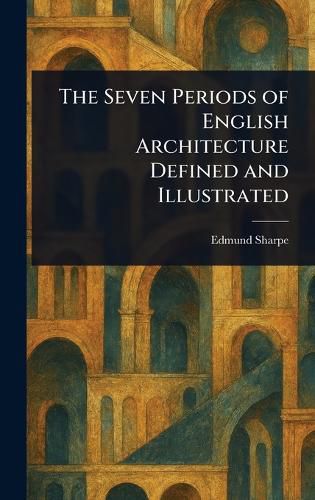Readings Newsletter
Become a Readings Member to make your shopping experience even easier.
Sign in or sign up for free!
You’re not far away from qualifying for FREE standard shipping within Australia
You’ve qualified for FREE standard shipping within Australia
The cart is loading…






This title is printed to order. This book may have been self-published. If so, we cannot guarantee the quality of the content. In the main most books will have gone through the editing process however some may not. We therefore suggest that you be aware of this before ordering this book. If in doubt check either the author or publisher’s details as we are unable to accept any returns unless they are faulty. Please contact us if you have any questions.
Explore the evolution of English architecture with Edmund Sharpe's "The Seven Periods of English Architecture: Defined and Illustrated." This meticulously prepared edition offers a detailed historical overview of distinct architectural periods in England, tracing the development of building styles and their defining characteristics. Sharpe's work provides a comprehensive reference for understanding the key phases in English architectural history, from early Gothic influences to later innovations.
Whether you are a student of architectural history, a practicing architect, or simply an enthusiast of English buildings, this volume offers valuable insights. Delve into the nuances of each period, examining the features that distinguish them and their place in the broader context of architectural development. This book serves as an enduring resource, shedding light on the rich tapestry of England's architectural heritage.
This work has been selected by scholars as being culturally important, and is part of the knowledge base of civilization as we know it.
This work is in the public domain in the United States of America, and possibly other nations. Within the United States, you may freely copy and distribute this work, as no entity (individual or corporate) has a copyright on the body of the work.
Scholars believe, and we concur, that this work is important enough to be preserved, reproduced, and made generally available to the public. We appreciate your support of the preservation process, and thank you for being an important part of keeping this knowledge alive and relevant.
$9.00 standard shipping within Australia
FREE standard shipping within Australia for orders over $100.00
Express & International shipping calculated at checkout
Stock availability can be subject to change without notice. We recommend calling the shop or contacting our online team to check availability of low stock items. Please see our Shopping Online page for more details.
This title is printed to order. This book may have been self-published. If so, we cannot guarantee the quality of the content. In the main most books will have gone through the editing process however some may not. We therefore suggest that you be aware of this before ordering this book. If in doubt check either the author or publisher’s details as we are unable to accept any returns unless they are faulty. Please contact us if you have any questions.
Explore the evolution of English architecture with Edmund Sharpe's "The Seven Periods of English Architecture: Defined and Illustrated." This meticulously prepared edition offers a detailed historical overview of distinct architectural periods in England, tracing the development of building styles and their defining characteristics. Sharpe's work provides a comprehensive reference for understanding the key phases in English architectural history, from early Gothic influences to later innovations.
Whether you are a student of architectural history, a practicing architect, or simply an enthusiast of English buildings, this volume offers valuable insights. Delve into the nuances of each period, examining the features that distinguish them and their place in the broader context of architectural development. This book serves as an enduring resource, shedding light on the rich tapestry of England's architectural heritage.
This work has been selected by scholars as being culturally important, and is part of the knowledge base of civilization as we know it.
This work is in the public domain in the United States of America, and possibly other nations. Within the United States, you may freely copy and distribute this work, as no entity (individual or corporate) has a copyright on the body of the work.
Scholars believe, and we concur, that this work is important enough to be preserved, reproduced, and made generally available to the public. We appreciate your support of the preservation process, and thank you for being an important part of keeping this knowledge alive and relevant.